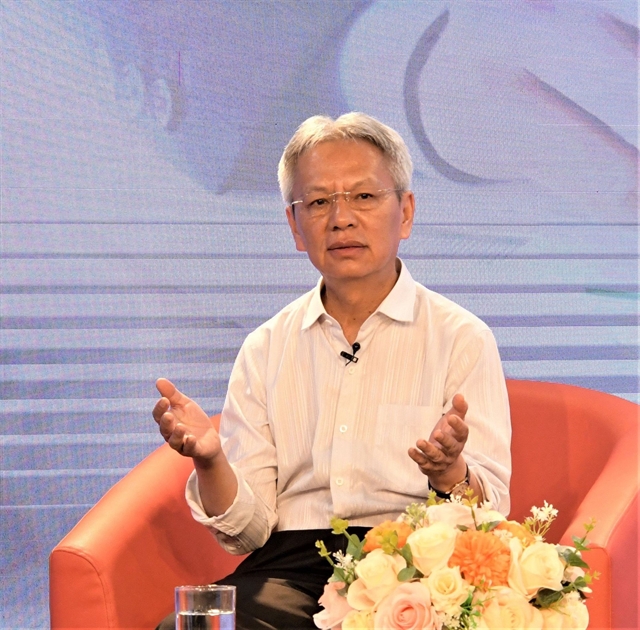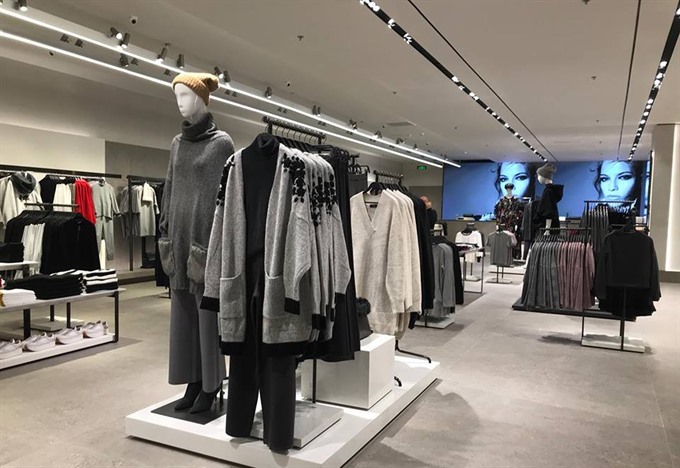 Economy
Economy

Việt Nam’s textile and garment industry is doing well abroad, but struggling at home, according experts. Exports of popular brands have raked in tens of billions of dollars each year – but with a population of 90 million, few firms are focusing on the local customer.
 |
| Inside Zara store in Hà Nội’s Bà Triệu Street. — Photo the courtesy of Zara |
HÀ NỘI — Việt Nam’s textile and garment industry is doing well abroad, but struggling at home, according experts.
Exports of popular brands have raked in tens of billions of dollars each year – but with a population of 90 million, few firms are focusing on local customers.
Instead, more and more foreign labels are selling in Việt Nam.
According to the Việt Nam Association of Retailers, more than 200 foreign fashion brands are present in Việt Nam, accounting for more than 60 per cent of the market share from medium-end to high-end products.
After a year in the Vietnamese market, Hennes & Mauritz AB (H&M) - Swedish fashion firm – plans to increase the number of its stores to six next month.
Zara also has stores in Hà Nội and HCM City.
Meanwhile, other foreign fashion brands such as Mango, Stradivarius, Massimo Dutti and Topshop has recently joined Việt Nam’s market.
After a period of developing brands of Vietnamese goods, fashion firms such as Việt Thy, Foci, Sài Gòn 2, Ninomaxx and PT 2000, have forced to narrow their production scale.
For instance, Sài Gòn 2 Garment Joint Stock Company launched 70-80 new products before but has made only about a half of this number at present. Production for the domestic market of the company has also decreased 20-25 per cent compared to 2016. Now, Saigon May 2 has accepted to lose the domestic market.
In order to survive in the market, Foci has been forced to cut all new investments and narrowed the store system.
To compete, they are now focusing on selling uniforms and developing more online sales.
Nguyễn Văn Tăng, director of the Mạnh Cường Garment Co Ltd, said it is better for his company to export workwear to Japan than to sell at home.
In addition, Hoàng Hữu Chương, chairman cum general director of the Nguyễn Hoàng Corporation, said the trade war between the US and China would make more Chinese goods, including textile and garment products, enter the local market. The textile and garment companies have also faced the problem of counterfeit and fake goods.
Chương said the authorities need to confiscate counterfeit and fake goods at border gates and market management agencies need to crackdown on businesses and individuals involving in the wrongdoings.
However, local textile and garment enterprises need to overcome weaknesses in design, materials and distribution systems, according to Chương.
In fact, Việt Nam is not lacking in raw materials, said Chương, adding that it is important to design products made from those materials. If they use foreign design and imported materials, Việt Nam would never have a developed fashion industry, he said.
Chairman of the Việt Nam Textile and Apparel Association Vũ Đức Giang said that it is necessary to start from the training stage to develop the fashion industry.
"We need to train students so that they not only can design clothes as usual and but also design from yarn and fabric," Giang told the Thời báo kinh doanh (Business Times) newspaper.
He said domestic businesses are often not financially stable so developing a distribution system is often tricky. A solution, he suggested, would be for different businesses to work together.
Phạm Xuân Hồng, chairman of the HCM City Textile and Apparel Association, said the association has proposed creating a design centre in the city to host trade events and encourage better connections for the industry.
Lê Tiến Trường, general director of Việt Nam Textile and Garment Group, suggested the group’s member companies could share their distribution systems and sell products in each other’s stores. — VNS




